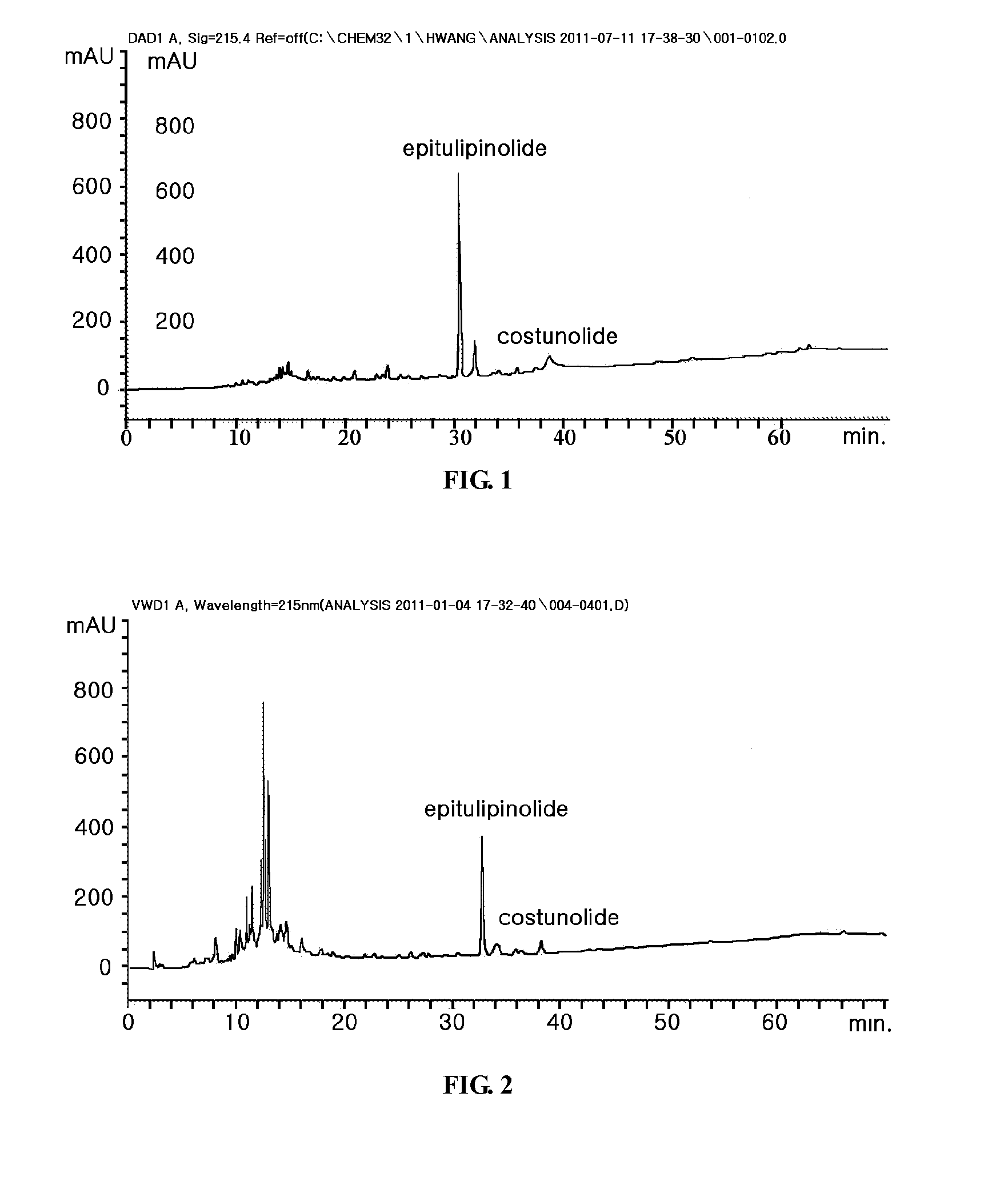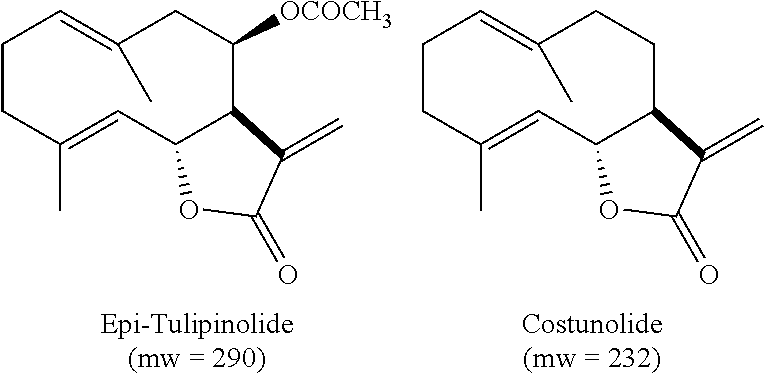Method for separating therapeutic agent for chronic myelogenous leukemia from bark of liriodendron tulipifera l.
- Summary
- Abstract
- Description
- Claims
- Application Information
AI Technical Summary
Benefits of technology
Problems solved by technology
Method used
Image
Examples
Example
Preparation Example 1
Preparation of Extract from Bark of Liriodendron tulipifera Using Ethyl Acetate Solvent
[0047]1. Solvent Extraction Step
[0048]200 g of dried and chopped bark of 3˜5 years old Liriodendron tulipifera has been agitated and extracted using 2000 ml of ethyl acetate at room temperature for 24 hours. After concentrating and filtering the extracted mixture at reduced pressure, the preliminary extract has been obtained. The obtained preliminary extract has been further mixed and extracted using 500 ml of butanol at room temperature for 2˜4 hours. Then, the butanol soluble materials have been removed by separating and removing the butanol layer. Finally, 12.54 g of crude extract has been obtained after concentrating the remained mixture.
[0049]2. Purification Step
[0050]After dissolving 12.54 g of obtained crude extract with 200 ml of 70% ethanol, 200 ml of n-hexane has been added and agitated to the crude extract mixture. After separating and removing the n-hexane layer, 7...
Example
Preparation Example 2
Preparation of Extract from Bark of Liriodendron tulipifera Using Ethyl Acetate Solvent
[0052]1. Solvent Extraction Step
[0053]200 g of dried and chopped bark of 3˜5 years old Liriodendron tulipifera has been agitated and extracted using 2000 ml of ethyl acetate at room temperature for 72 hours. After concentrating and filtering the extracted mixture at reduced pressure, the preliminary extract has been obtained. The obtained preliminary extract has been further mixed and extracted using 500 ml of butanol at room temperature for 2˜4 hours. Then, the butanol soluble materials have been removed by separating and removing the butanol layer. Finally, 13.72 g of crude extract has been obtained after concentrating the remained mixture.
[0054]2. Purification Step
[0055]After dissolving 13.72 g of obtained crude extract with 200 ml of 70% ethanol, 200 ml of n-hexane has been added and agitated to the crude extract mixture. After separating and removing the n-hexane layer, 7...
Example
Preparation Example 3
Preparation of Extract from Bark of Liriodendron tulipifera Using Ethyl Acetate Solvent
[0057]1. Solvent Extraction Step
[0058]200 g of crushed bark of 3˜5 years old Liriodendron tulipifera has been agitated and extracted using 2000 ml of ethyl acetate at room temperature for 96 hours. After concentrating and filtering the extracted mixture at reduced pressure, the preliminary extract has been obtained. The obtained preliminary extract has been further mixed and extracted using 500 ml of butanol at room temperature for 2˜4 hours. Then, the butanol soluble materials have been removed by separating and removing the butanol layer. Finally, 25.71 g of crude extract has been obtained after concentrating the remained mixture.
[0059]2. Purification Step
[0060]After dissolving 25.71 g of obtained crude extract with 200 ml of 70% ethanol, 200 ml of n-hexane has been added and agitated to the crude extract mixture. After separating and removing the n-hexane layer, 70% ethanol...
PUM
| Property | Measurement | Unit |
|---|---|---|
| Concentration | aaaaa | aaaaa |
Abstract
Description
Claims
Application Information
 Login to view more
Login to view more - R&D Engineer
- R&D Manager
- IP Professional
- Industry Leading Data Capabilities
- Powerful AI technology
- Patent DNA Extraction
Browse by: Latest US Patents, China's latest patents, Technical Efficacy Thesaurus, Application Domain, Technology Topic.
© 2024 PatSnap. All rights reserved.Legal|Privacy policy|Modern Slavery Act Transparency Statement|Sitemap



